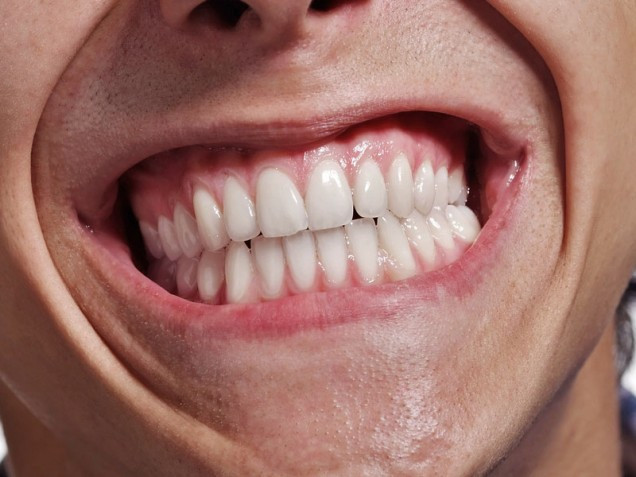views
Teeth Grinding Treatment
If you suffer from jaw tension, headaches, or tooth sensitivity, you might be asking, are there exercises that help with teeth grinding? Known medically as bruxism, Teeth Grinding Treatment in Dubai can occur while awake or during sleep, and it’s often related to stress, poor jaw alignment, or muscle fatigue. While nightguards and stress management are common treatments, specific exercises can also play a significant role in relieving symptoms and preventing long-term damage.
Why Jaw Exercises Are Effective for Bruxism?
Targeted exercises help release tension in the jaw and facial muscles, reducing the unconscious urge to grind or clench. These exercises also improve joint mobility and blood flow to the affected areas.
-
Stretching increases flexibility in the temporomandibular joint (TMJ)
-
Strengthening helps maintain proper jaw alignment
-
Relaxation techniques calm the nervous system and reduce bruxism triggers
-
Muscle retraining builds awareness of jaw positioning
-
Regular practice reduces stiffness and morning discomfort
These benefits make jaw exercises a safe, natural complement to other bruxism treatments.

Simple Jaw Stretching Exercises You Can Try:
Gentle jaw stretches help loosen tight muscles and promote better jaw function. These are especially useful in the morning after a night of grinding.
-
Resisted mouth opening: Place your fingers under your chin, then slowly open your mouth while applying light resistance with your hand. Hold for 5 seconds.
-
Side-to-side movement: Move your lower jaw slowly from left to right, holding each side for a few seconds.
-
Tongue-to-roof stretch: Press your tongue to the roof of your mouth and slowly open your jaw halfway, holding for a few seconds before releasing.
-
Chin tucks: Gently pull your chin backward (like creating a double chin) to align your neck and jaw posture.
Repeat each exercise 5–10 times daily, and always perform them gently to avoid aggravating the jaw.
Relaxation and Breathing Techniques to Reduce Clenching:
Stress is one of the leading causes of bruxism, so incorporating relaxation techniques into your routine can significantly reduce the urge to grind your teeth.
-
Deep diaphragmatic breathing: Inhale deeply through the nose for four counts, hold for four, and exhale through the mouth for six.
-
Progressive muscle relaxation: Tense and then relax each group of muscles from head to toe, paying special attention to the jaw.
-
Mindfulness meditation: Focus on your breath and bodily sensations to calm your nervous system and reduce unconscious tension.
-
Guided visualization: Picture your jaw loosening and relaxing with each breath in a peaceful setting.
Practicing these methods consistently helps lower cortisol levels and reduce nighttime grinding episodes.
Tongue and Posture Exercises to Retrain Your Bite:
Believe it or not, your tongue and posture play a key role in bruxism. Improper tongue placement or slouched posture can put strain on your jaw muscles and worsen teeth grinding.
-
Tongue resting posture: Keep the tongue resting gently on the roof of your mouth behind your front teeth throughout the day.
-
Jaw awareness check: Set hourly reminders to check that your jaw is relaxed, teeth are slightly apart, and tongue is in the correct resting position.
-
Neck stretches: Loosen the neck and upper shoulders to reduce tension transmitted to the jaw.
-
Wall posture drill: Stand with your back against a wall, ensuring your head, shoulders, and hips touch it—this encourages neutral jaw alignment.
These small habits can retrain your jaw to rest naturally and reduce pressure on your TMJ over time.
When to Combine Exercises With Professional Treatment?
While exercises can provide relief, they may not be enough if your Teeth Grinding Treatment is severe or linked to other medical issues. Knowing when to seek additional help is key to long-term management.
-
See a dentist if your teeth show signs of damage or uneven wear
-
Visit a physical therapist if exercises cause pain or don’t improve symptoms
-
Talk to a doctor if stress, anxiety, or sleep issues are driving your bruxism
-
Use a custom nightguard to protect your teeth while you sleep
-
Consider Botox treatment for severe, persistent jaw tension
Combining exercises with professional care ensures a well-rounded and effective approach to managing teeth grinding.
Final Thoughts: Do Exercises Really Help With Teeth Grinding?
So, are there exercises that help with teeth grinding? Absolutely. While not a cure on their own, jaw, tongue, and posture exercises can significantly ease symptoms, reduce frequency, and prevent long-term complications. When paired with relaxation techniques and, if needed, professional intervention, they provide a powerful tool for regaining control over bruxism. Start small, stay consistent, and monitor your progress—you may be surprised by the relief you can achieve with just a few minutes a day.



Comments
0 comment